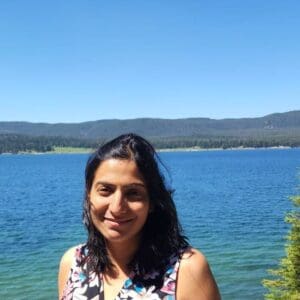Want more insights in your inbox?
Subscribe to our monthly newsletter.
Subscribe to our monthly newsletter.
“A significant gender gap has persisted throughout the years at all levels of science, technology, engineering, and mathematics (STEM) disciplines all over the world. Even though women have made tremendous progress toward increasing their participation in higher education, they are still under-represented in these fields.
On 14 March 2011, the Commission on the Status of Women adopted a report at its fifty-fifth session, with agreed conclusions on access and participation of women and girls in education, training and science and technology, and for the promotion of women’s equal access to full employment and decent work. On 20 December 2013, the General Assembly adopted a resolution on science, technology and innovation for development, in which it recognized that full and equal access to and participation in science, technology, and innovation for women and girls of all ages is imperative for achieving gender equality and the empowerment of women and girls.”

Yaminee Rajoria is a Software Engineering Manager who focuses on the Cadent Aperture Platform ad enablement tool. Her team develops the supply-side services that allow MVPDs to collaborate with programmers to deliver multiple television channels and alternate streams to households.
Did you always know you wanted to work in a STEM-related role?
No, not really. During my childhood, the software engineering field was still nascent in India. However, my parents always believed that having a robust educational background in mathematics and the sciences was very important to our career growth as adults. As a result of which, they pushed me and my siblings to excel in school and aim to pursue higher education at the top schools in India. Ultimately, I graduated as an engineer in the field of computer science, during which I gradually accumulated interest and pursued a role in software development.
Are there any resources you have found valuable to building your career?
Mostly through personal experience learning on the job. I picked up new technical skills by researching the topics on the internet and online training. But the learning was more efficient when I directly applied them at my work on a day-to-day basis. Another valuable resource was learning by observing my colleagues and some of my family members who are role models in their areas of work.
What advice do you have for other women interested in pursuing a career in STEM?
Care and empathy are natural attributes of women. And these attributes are essential to the healthy collaboration and innovation that a career in STEM demands daily. Many spoken and hidden biases in society affect the confidence of women, but I encourage them to trust their fundamental nature, be courageous to discuss them, build inner strength with every experience, and employ a data-oriented approach to conflict resolution and decision-making.

Dyandra Allen, an Associate Frontend Engineer, is responsible for designing and building websites and web applications with a focus on user experience.
Did you always know you wanted to work in a STEM-related role?
Nope! When I was a kid, I wanted to be a fashion designer because of the show, That’s So Raven. Later, in middle school, I thought I wanted to be a graphic designer. I didn’t imagine myself in a STEM-related career until high school. However, I jumped between my interests in forensics, biology, and chemistry before choosing computer science.
Are there any resources you have found valuable to building your career?
While I was in college, I found it valuable to take advantage of all the available coding programs (as opposed to formal courses) – most of them I heard about through my school’s listserv. It was because of those programs that I decided to pursue CS as a career. I then took CodePath’s iOS development course, joined a Biomedical Engineering capstone project, and got a job as a web developer for my school’s Student Association. Nowadays, CodePath offers even more courses on topics like cybersecurity, web development, and technical interview prep. Also, this is frontend specific, but I found the Mozilla Development Network helpful for teaching me best practices (and it took me way too long to discover that site!).
What advice do you have for other women interested in pursuing a career in STEM?
The only person you need to compare yourself to is you. Focus on how you’re growing, and don’t worry about other people because we all walk different paths in life.
Learn more about life at Cadent and see available roles on our Careers page.
Subscribe to our monthly update to get at all the latest from Cadent.